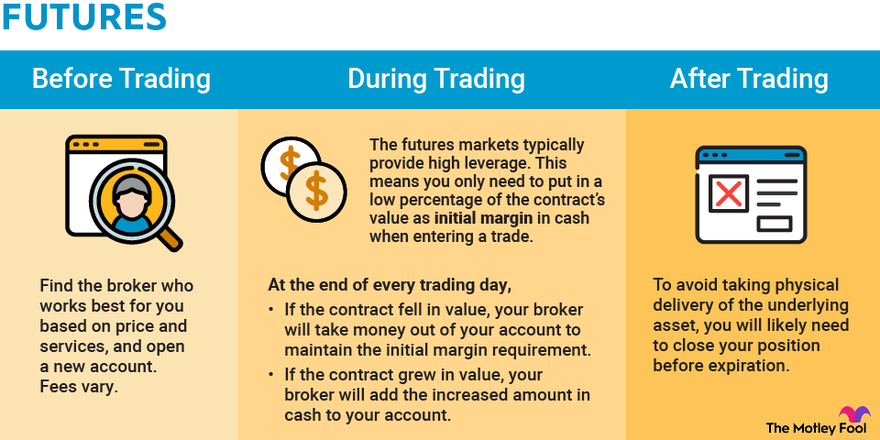The cryptocurrency market has seen significant growth in recent years, with various trading options emerging to cater to different investor needs. Two popular trading methods are spot trading and futures trading.
While both involve buying and selling cryptocurrencies, they differ in their execution, risks, and potential returns. Understanding the differences between spot and futures trading is crucial for investors to make informed decisions and navigate the complex cryptocurrency landscape. This article will delve into the specifics of spot and futures trading, highlighting their key differences and helping readers choose the most suitable option for their investment goals.
Understanding the Basics of Spot and Futures Trading in Crypto
The world of cryptocurrency trading is vast and complex, with various strategies and instruments available to traders. Two fundamental concepts in this domain are spot trading and futures trading. While both are used for buying and selling cryptocurrencies, they differ significantly in their approach, benefits, and risks.
Spot trading involves the direct purchase or sale of cryptocurrencies, where the transaction is settled immediately. On the other hand, futures trading involves contracts that obligate the buyer to purchase, or the seller to sell, an asset at a predetermined price at a specified time in the future.
Spot Trading Explained
Spot trading is the most straightforward form of trading cryptocurrencies. It involves buying or selling digital assets at the current market price, with the transaction being settled on the spot. This means that when you buy a cryptocurrency through spot trading, you are essentially purchasing it at the current market price and taking ownership of it. The transaction is immediate, and the assets are transferred to your account. Liquidity and market volatility are key factors that influence spot trading, as they can significantly impact the price at which you buy or sell a cryptocurrency.
Futures Trading Demystified
Futures trading, in contrast, involves trading contracts that represent an agreement to buy or sell a specific cryptocurrency at a predetermined price on a particular date in the future. These contracts are derivative instruments, meaning their value is derived from the underlying asset (in this case, a cryptocurrency). Futures trading allows traders to speculate on the future price movements of cryptocurrencies without actually owning them. It’s a more complex form of trading that involves leverage, allowing traders to control larger positions with a relatively small amount of capital. However, this also increases the risk, as potential losses can exceed the initial investment.
Key Differences Between Spot and Futures Trading
One of the primary differences between spot and futures trading lies in the ownership and settlement of the assets. In spot trading, you directly own the cryptocurrencies you buy, whereas in futures trading, you’re trading contracts that represent a future transaction. Another significant difference is the risk exposure. Spot trading risks are generally limited to the amount invested, whereas futures trading, due to its leveraged nature, can result in losses that exceed the initial margin. Understanding these differences is crucial for traders to choose the strategy that best aligns with their risk tolerance and investment goals.
| Feature | Spot Trading | Futures Trading |
|---|---|---|
| Ownership | Direct ownership of cryptocurrencies | Trading contracts representing future transactions |
| Settlement | Immediate settlement | Settlement at a predetermined future date |
| Risk Exposure | Limited to the amount invested | Potential losses can exceed initial margin due to leverage |
| Complexity | Straightforward, simple transactions | More complex, involves derivative instruments and leverage |
Which is better, spot or futures trading?

The choice between spot and futures trading depends on various factors, including the trader’s goals, risk tolerance, and market conditions. Spot trading involves buying or selling an asset at its current market price, with the transaction typically settled within a short period, usually within two business days. On the other hand, futures trading involves buying or selling a contract that obligates the buyer to purchase, or the seller to sell, an asset at a predetermined price on a specific date in the future.
Key differences between spot and futures trading
Spot trading is generally considered more straightforward, as it involves a simple transaction where the buyer pays the current market price for the asset. In contrast, futures trading involves a contract that is marked to market daily, meaning that the value of the contract is adjusted daily to reflect changes in the underlying asset’s price. This can result in significant margin calls if the market moves against the trader.
 What Is the Best Cryptocurrency to Buy Today?
What Is the Best Cryptocurrency to Buy Today?- The settlement process differs between spot and futures trading, with spot trading typically involving physical delivery or cash settlement within a short period.
- Futures trading involves a contract with a specific expiration date, whereas spot trading does not have an expiration date.
- The leverage available in futures trading can amplify potential gains, but it also increases the risk of significant losses.
Advantages of spot trading
Spot trading offers several advantages, including simplicity and the ability to own the underlying asset. It is also generally less complex than futures trading, as it does not involve the complexities of margin calls and contract expirations.
- Spot trading allows traders to own the underlying asset, which can be beneficial for long-term investors.
- The settlement process is typically straightforward, with the transaction settled within a short period.
- Spot trading can be less risky than futures trading, as it does not involve the use of leverage.
Advantages of futures trading
Futures trading offers several advantages, including the ability to hedge against potential losses and to speculate on price movements. It also allows traders to use leverage, which can amplify potential gains.
- Futures trading allows traders to hedge against potential losses by taking a position in a futures contract that is opposite to their position in the underlying asset.
- The use of leverage in futures trading can amplify potential gains, making it a popular choice for speculative traders.
- Futures trading can provide a way to speculate on price movements, allowing traders to profit from both upward and downward price movements.
Is it better to trade crypto or futures?

The decision to trade cryptocurrency or futures depends on various factors including market understanding, risk tolerance, and investment goals. Both cryptocurrency and futures trading involve speculation on the future value of an asset, but they operate in different markets and have distinct characteristics.
Market Volatility and Liquidity
Cryptocurrency markets are known for their high volatility and relatively lower liquidity compared to traditional futures markets. This volatility can result in significant gains or losses. Futures markets, on the other hand, are generally more liquid and can offer more stable trading conditions due to the involvement of a broader range of participants. Key considerations include:
- The cryptocurrency market operates 24/7, allowing for constant trading opportunities.
- Futures markets have scheduled trading hours and may be closed during certain periods.
- Liquidity in futures can be higher due to the participation of institutional investors.
Leverage and Margin Requirements
Both cryptocurrency and futures trading often involve the use of leverage, allowing traders to control larger positions with less capital. However, the margin requirements and the maximum leverage available can differ significantly between the two. For instance:
- Cryptocurrency exchanges may offer high leverage, sometimes up to 100x or more, though this varies by exchange and asset.
- Futures trading leverage is also available but is typically regulated and may be lower than what’s offered in some cryptocurrency markets.
- Margin calls can occur in both markets if the market moves against a trader’s position.
Regulatory Environment
The regulatory environment for cryptocurrency and futures trading differs significantly. Cryptocurrency regulations are still evolving and vary widely by jurisdiction, while futures trading is heavily regulated by specific commodity or financial regulatory bodies. Important points to consider are:
- Cryptocurrency regulations can impact the availability of certain assets and trading pairs.
- Futures trading is subject to strict regulations, including those related to margining and position limits.
- The regulatory clarity in futures markets can provide a layer of investor protection not always available in cryptocurrency markets.
Why do traders prefer futures?

Traders prefer futures because they offer a flexible and efficient way to manage risk and speculate on price movements in various markets, including commodities, indices, and currencies. Futures contracts are standardized agreements to buy or sell an underlying asset at a predetermined price on a specific date. This allows traders to hedge against potential losses or gains due to price fluctuations, or to profit from anticipated price changes.
Leverage and Margin
Futures trading involves leverage, which means that traders can control large positions with relatively small amounts of capital. This is because futures contracts require margin payments, which are a fraction of the contract’s total value. As a result, traders can amplify their potential gains, but also risk larger losses if the market moves against them. The key benefits of leverage in futures trading include:
 How Do I Start Trading Crypto as a Beginner?
How Do I Start Trading Crypto as a Beginner?- Amplified potential gains due to the ability to control larger positions
- Increased flexibility to trade various markets and strategies
- Capital efficiency, as margin requirements are typically lower than the total contract value
Liquidity and Market Efficiency
Futures markets are often highly liquid, with many buyers and sellers actively trading contracts. This liquidity contributes to market efficiency, as prices reflect a broad range of market participants’ expectations and sentiment. The advantages of liquidity in futures markets include:
- Tighter bid-ask spreads, reducing trading costs
- Faster execution of trades, minimizing slippage and market impact
- Greater market transparency, as prices are more representative of true market value
Risk Management and Hedging
Futures contracts provide an effective tool for managing risk and hedging against potential losses. By taking a position in a futures contract that is negatively correlated with an existing exposure, traders can mitigate potential losses or lock in profits. The benefits of using futures for risk management include:
- Ability to hedge against price fluctuations in underlying assets
- Flexibility to adjust hedge positions according to changing market conditions
- Potential to reduce overall portfolio risk through diversification and hedging strategies
Which strategy is best for crypto trading?

The best strategy for crypto trading depends on various factors such as market conditions, risk tolerance, and investment goals. A well-thought-out strategy can help traders make informed decisions and minimize losses.
Crypto Trading Strategies for Beginners
For those new to crypto trading, it’s essential to start with a solid foundation. One approach is to begin with a simple strategy and gradually move to more complex ones as experience and confidence grow.
- Start by understanding the basics of trading, including chart analysis and risk management.
- Choose a reputable exchange and familiarize yourself with its interface and tools.
- Begin with small investments and gradually increase them as you gain more experience.
Technical Analysis for Crypto Trading
Technical analysis involves studying charts and patterns to predict future price movements. This strategy can be effective in identifying trends and making informed trading decisions.
- Learn to identify chart patterns such as support and resistance levels, and trend lines.
- Use technical indicators such as moving averages and relative strength index (RSI) to gauge market sentiment.
- Combine technical analysis with other forms of analysis, such as fundamental analysis, for a more comprehensive view.
Risk Management in Crypto Trading
Risk management is crucial in crypto trading due to the market’s high volatility. A well-planned risk management strategy can help minimize losses and protect investments.
- Set clear stop-loss levels to limit potential losses.
- Diversify your portfolio by investing in a range of cryptocurrencies.
- Use position sizing to manage the amount of capital invested in each trade.
Frequently Asked Questions
What is Spot Trading in Crypto?
Spot trading in crypto involves buying and selling cryptocurrencies at the current market price. It’s a straightforward transaction where you exchange one asset for another. You own the asset outright, and the transaction is settled immediately. Spot trading is ideal for investors who want to hold onto their assets for a longer period or use them for other purposes.
What is Futures Trading in Crypto?
Futures trading in crypto involves speculating on the future price of a cryptocurrency. You enter into a contract to buy or sell an asset at a predetermined price on a specific date. Futures trading allows you to bet on the price movement without actually owning the asset. It’s often used for hedging or speculative purposes, and it involves higher risks due to leverage and market volatility.
How Do Spot and Futures Trading Differ?
Spot and futures trading differ in their execution, ownership, and purpose. Spot trading involves immediate ownership and settlement, whereas futures trading involves a contract that speculates on future prices. Spot trading is generally less risky, while futures trading is riskier due to leverage and the potential for significant losses. The two types of trading cater to different investment strategies and risk appetites.
 Is Crypto Trading Still Profitable in 2025?
Is Crypto Trading Still Profitable in 2025?Which is Riskier: Spot or Futures Trading?
Futures trading is generally riskier than spot trading due to the use of leverage, which amplifies potential gains and losses. In futures trading, you can lose more than your initial investment if the market moves against your position. Spot trading, on the other hand, involves owning the asset outright, so your losses are limited to the amount you invested. However, spot trading can still be risky due to market volatility, but the risk is more contained compared to futures trading.

